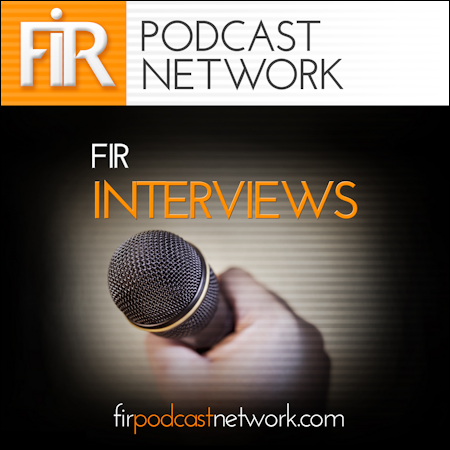
One of the most credible research efforts into trust in organizations is the Edelman Trust Barometer, a report published annually since 2000 by the Edelman PR firm.
The 2016 report, published in January, surveyed 33,000 people in 28 countries worldwide and provides rich insights from the analysis of respondents’ opinions on a wide range of topics under the broad umbrella term ‘trust.’ You can read the report for detailed information.
I referenced this report in a presentation I gave last week during the B2B Marketing Expo in London about employee brand advocates and ways in which my employer IBM embraces such advocacy.
Trust is the primary foundation of every initiative or activity that involves someone advocating something or someone else, whether they’re employees or anyone else. You must be able to present yourself and your advocacy in a way that engenders belief in you and that your message is honest and transparent (no hidden agendas or ulterior motives) and, hence, the seeds for building real trust.
In a sense, you trust that what you see is what you get.
In my presentation, I outlined four specific examples of employee advocacy at work at IBM:
- Millennial Corps – With 4,000+ employee members in over 60 countries and across all industries, Millennial Corps is a channel for digital natives to spark innovation and provide feedback to senior leaders on company-wide topics such as recruitment, client experience, transformation, and partnership opportunities among others. (The number is actually 5,000+ according to a great feature in FastCompany published last week.)
- #500Under40 – A first-of-its kind event hosted by IBM millennials where up to 100 millennials from different companies gather to share how they’re innovating and challenging the status quo within their company walls.
- IBM Voices – A service that ranks the most valuable content shared by a curated list of employees’ Twitter accounts. With Voices, you see top trending stories from people you trust that lets you connect to and view tweets from key IBM thought leaders. You can also view IBM’s own feed of IBMers and brands.
- Get Social Hub – A social engagement and amplification service that helps employees participate in conversations that align with their own areas of interest and expertise. They use an app from VoiceStorm, the service provider, that enables employees to share IBM (and other) content with their own networks including Twitter, LinkedIn, Facebook and more that can produce real business value for everyone, employer and employee.
I’ve been participating in the latter, Get Social Hub, for some months. From my perspective, I see it it as a very useful tool that presents content to me that otherwise I might not have been aware of, that I might feel relevant and of interest to my own online communities. From IBM’s perspective, it gives them the benefit of exposing corporate, brand and other messaging to people in my networks, but by me and so carrying the implicit promise of trust in the sender (me).
And trust is the key point, as I mentioned at the start of this post.
In the conclusion of my presentation, I spoke of how the four examples I’d discussed could work in many different types of organizations. Some – the Millennial Corps, for example – might be better in large enterprises but only from a scale point of view: the concepts are valid no matter the size or type of organization.
I offered five tips to the audience on where to start with employee advocacy:
- Foundation: employees are proud of their organization and the role they play. This organizational ‘state of being’ must be in place; you cannot launch an advocacy initiative and expect any measurable success otherwise.
- Social media guidelines and communication. Employees should have a clear understanding of the rules of the road when it comes to talking and engaging on social networks. Guidelines, yes, but also communicating them.
- Provide training and build expertise. Training can be peer level to complement guidelines, etc, if you are resource-constrained. Connect expert employee social media users with confidence and experience to be your go-people for help and knowledge.
- Incentivize advocacy. You should reward employees for what they do. No, that doesn’t mean paying them or providing gifts; rather, it’s about recognition and badge-type awards. Very gamification-like.
- Analytics and reporting. It goes without saying (but here it is) – analyse results, glean the actionable insights and report them. Rinse and repeat.
With these tips come these qualifiers, leader behaviours mostly:
Your Prerequisites
- You know where conversations are occurring, who has influence, and why
- You know which types of social media are preferred by your customers
- You understand ethical behaviour is a key part of maintaining trust
- You are clear about authenticity, honesty and transparency
Here’s the deck I used in the presentation.
If you’d care to share stories of your successes, or other tips, I’d love to hear about them.
Good luck with your advocacy!













8 responses to “Trust: the key to employee advocacy success”
Trust: the key to #employeeadvocacy success https://t.co/KTEDqeBt9T https://t.co/yC7WhLuV3z
Trust: the key to employee advocacy success https://t.co/iJeMQiLN42
Trust: the key to employee advocacy success:
One of the most credible research efforts into trust in organiz… https://t.co/pphibiBNQX
Hobson: Trust: the key to employee advocacy success:
One of the most credible research efforts into trust in… https://t.co/duQOxfY4VY
RT @jangles : Trust: the key to #employeeadvocacy success https://t.co/qMLMEb5S0T… https://t.co/s9RSWO3MeF
Presentation on the role of trust in employee brand advocacy at IBM (and elsewhere), by @jangles: https://t.co/TNf2vPJoRV
Hi Neville, thanks for shedding some light on how trust could be the key to our business’s success. By going through your post, I have realized some major slacks in my own employee advocacy policy and would surely bring about the necessary changes for progress. Looking forward to your next informative post!
Yw, Joy, glad you found this post of value!